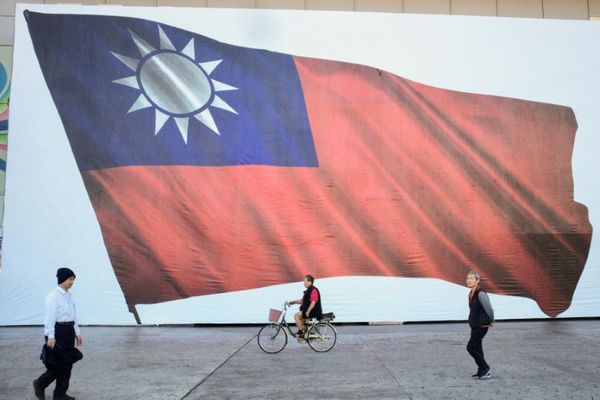
NEW DELHI : At a recent virtual real estate conference, investor Rakesh Jhunjhunwala, dressed in his trademark white shirt, spoke on urbanization, the demand of housing, Nehru and socialism, the stock markets. And then, the inevitable question popped.
“The airline industry is fraught with challenges and yet you have gone ahead and launched an ultra-low-cost airline?"

“I have got a business plan," Jhunjhunwala replied, without elaborating what the strategy is. “I’m surprised at the way people are surprised. I tell them when I came to the stock market, my mother asked, ‘who will marry you?’ Everybody thought I would fail and I proved them wrong," he added.
Jhunjhunwala is backing Akasa Air, founded by aviation industry veteran Vinay Dube. Jhunjhunwala has invested about $50 million. The airline is awaiting regulatory approvals for a launch later this summer. Meanwhile, it has placed a $9 billion order (at list prices) for 72 Boeing 737 Max family of aircraft. The first delivery is expected in April.
The surprise, and scepticism, is because India’s aviation landscape is littered with stories of spectacular failures—Kingfisher Airlines and Jet Airways are the two big names that ran into air pockets before being grounded. The aviation industry has also faced turbulence in the context of the pandemic. Air passenger traffic has slumped and all carriers have incurred huge losses. Domestic air traffic is now expected to fully recover only by the fourth quarter of 2022-23, according to a report by rating agency Crisil Ltd. Indian airlines may post a record loss of over ₹20,000 crore in the current financial year. This would be 44% higher than the combined losses reported in 2021-22. And although the third wave has ebbed, uncertainties around future outbreaks of the pandemic still loom large.
If one manages to navigate past the current turbulence, there is money to be made. Jhunjhunwala is well aware of this.
Aviation consultancy Capa India expects about 80 million passengers to fly within the country and 16 million to travel overseas this fiscal, up from 53 million domestic passengers and 10 million international passengers in 2020-21. While these numbers are way below 2019-20 (when 138 million passengers flew on domestic routes and 67 million passengers took international flights), the air passenger traffic has consistently reported a hockey-stick sort of a growth after each wave of the pandemic.
Industry experts argue that the industry’s long-term potential remains unharmed by the pandemic. In 2021, aircraft manufacturer Boeing Co had forecast strong aviation growth in India over the next two decades due to its growing economy and expanding middle class. The company said that it expected India’s commercial aircraft fleet to grow four-fold by 2039.
Separately, the airline industry lobby group, the International Air Transport Association (IATA), which represents 85% of the world’s airlines, expects 478 million Indians to fly annually by 2036.
While those are impressive projections, the market, today, is tilted towards highly capitalized airlines like IndiGo and the Tata Group operated ones, which include Air India, Air India Express, Vistara, and AirAsia India. Many, therefore, question if Akasa can punch above its weight with its proposed low-cost model.
“I won’t call it low-cost. I will call it frugality. Frugality is a culture," Jhunjhunwala said at the real estate conference, hinting at how the airline would be run.
Frugal disruption
Low-cost carriers usually have a single aircraft fleet and offer a single class category, while full-service ones usually have multiple cabin options and a diverse fleet. In the domestic market, while airlines like IndiGo, SpiceJet, GoFirst (previously GoAir), Air India Express, and AirAsia India are categorized as low-cost, Air India and Vistara are full-service carriers.
What disruption can Akasa bring to the table?
“Akasa is expected to disrupt the low-cost carrier market led by IndiGo, but only after reaching substantial scale. In the short term, it may cause a churn in top talent in the industry and impact airfares on certain sectors," said a senior official with a Gurugram-based airline, who did not want to be identified.
“Akasa, however, is well placed to take on incumbents struggling with debt and high-cost structures. As Akasa will start from a fresh slate, and is debt-free, it could grow at the expense of airlines like SpiceJet and GoFirst," the executive added.
It is nearly certain that Akasa’s launch would mean a drop in fares on certain routes—as the competition grows, the flyer benefits. All of Akasa’s rivals may try to retain their market share by rolling out discounts. If Akasa can sustain lower prices, it may hope to garner a good share of traffic, experts said.
“Akasa has raised a significant amount of money and will be supplemented by sale-and-leaseback (SLB) inflows. So, they are not someone that IndiGo or others can bleed to kill with a loss-leadership strategy," Satyendra Pandey, managing partner of aviation advisory firm AT-TV, said.
An SLB is a transaction in which the owner sells the asset, in this case, an aircraft, and then takes it back on lease from the buyer. Such a deal typically removes planes, and associated debt, from the balance sheet of the buyer.
“On the cost front, all indications are that Akasa will be competitive. In terms of credibility, Akasa has been pulling in good talent. Combined, Akasa has managed to build a foundation with competitive costs, credibility, and cash, which is making other airlines sit up and take notice," Pandey added.
Besides Jhunjhunwala, Akasa has reportedly attracted investments from Madhav Bhatkuly, founder of investment fund New Horizon, other travel sector veterans, and a US-based hedge fund.
Poaching talent
Expectedly, Akasa has pulled in talent from other airlines. The company’s website has a photograph of nine founding members, an impressive cast of characters that include Aditya Ghosh, the former president and member of the board at IndiGo.
However, Ghosh will not be involved with the day-to-day operations at Akasa—he will represent Rakesh Jhunjhunwala on the board.
“What works for Akasa is that a lot of their talent is from IndiGo. So, they will know how IndiGo thinks and reacts as they will have to develop a strategy to compete with the larger airline," an aviation executive who didn’t want to be quoted said.
Akasa, for instance, has Ankur Goel, the former vice president and head of IndiGo’s treasury and investor relations, as its chief financial officer.
Besides Indigo, Akasa has also hired senior executives who had earlier worked with Jet Airways or GoAir. The list includes Praveen Iyer (chief commercial officer), Bhavin Joshi (senior vice president of aircraft leasing and procurement), Belson Coutinho (marketing head), Adam Voss (engineering head) and Ajit Bhagchandani (vice president of inflight services).
Several mid-level executives and pilots from other airlines have also been offered jobs at Akasa—the airline is reportedly offering employee stock options (ESOPs) to lure talent.
According to a report in The Economic Times, Akasa is offering far higher pay to pilots—almost 80% higher—than SpiceJet. Poaching pilots from SpiceJet makes sense since the incumbent operates Boeing 737s, the same family of aircraft ordered by Akasa. The same report added that the airline is expecting to hire about 300-350 cabin crew members and pilots by March 2023.
Headwinds coming
So, what will be Akasa’s major challenges?
The airline can disrupt pricing on certain routes but its rivalry with market leader IndiGo is likely to be fierce. Large airlines have used their muscle to kill competition on previous occasions. IndiGo, for instance, is known to eliminate competition by deploying capacity and bringing down fares on certain routes.
“In the past, IndiGo has increased frequency and reduced fares on routes like Kolkata-Agartala, leading to SpiceJet vacating the route. IndiGo later increased fares on this route," said Ameya Joshi, independent aviation analyst and founder of aviation website NetworkThoughts.
“Similarly, SpiceJet was pushed out of Tuticorin (Thoothukudi) as IndiGo pushed in with its ATR using the same strategy."
For IndiGo, allowing a flight or two to suffer impacts a minuscule percentage of its schedule. “Even with fare drop, IndiGo ends up making money and not losing out due to its low-cost structure," Joshi said.
Here’s a pointer to IndiGo’s scale of operations. At the end of 31 December, IndiGo’s fleet consisted of 56 Airbus 320ceos, 140 A320neos, 52 A321neos and 35 ATRs. The airline flew a maximum of 1,574 daily flights, including non-scheduled flights, during this time. The airline will add more capacity, going ahead. It has placed an order for 332 A320neo planes and 398 A321neo planes. Thus far, it has taken delivery of 120 A320 planes and 33 Airbus A321neo planes.
In comparison, SpiceJet and GoFirst have a relatively smaller fleet of 95 and 57 aircraft, respectively. The Tata group operated airlines—Air India, Vistara, Air India Express and AirAsia India—have over 200 aircraft in service between them.
“IndiGo plans to operate in any Indian city with a population of over a million," said a former IndiGo executive, who didn’t want to be quoted. This implies it would fly on almost any route Akasa picks.
“On the international front, IndiGo plans to connect to international destinations with its A321XLR fleet, the latest and longest-range variant of the A320neo family of planes. It will be a challenging task for anyone to compete with IndiGo on both fronts," the former executive added.
While Akasa has been silent on the routes it would fly, founder Dube’s media statements indicate that the airline will service both metros, tier II and tier III cities. However, slots are difficult to come by at India’s busiest airports—New Delhi and Mumbai. Akasa, therefore, may have limited connectivity between these two important locations. Instead, the airline may choose to prioritize presence in cities such as Bengaluru, Kolkata and Hyderabad, among others.
Akasa Air didn’t respond to queries from Mint.
Meanwhile, everyone appears to be awaiting the launch date. Some experts, nevertheless, aren’t convinced this is the right time.
“Akasa’s entry into service at this time (summer of 2022) is unfortunate. They should delay the launch until the third quarter or later—till the industry has gone through consolidation," said aviation veteran Shakti Lumba, a former Indian Airlines executive and a former vice president of operations at IndiGo.
At least two airlines are in a precarious financial state and many experts see an imminent consolidation.
“The airline space is plagued with overcapacity and this has resulted in low fares already. All airlines end up as low-fare carriers irrespective of whether they are low-cost or full-service carriers," Lumba added.
Nevertheless, the timing of the launch—post pandemic when passenger volumes are still low—will allow Akasa to bargain for the best contracts from vendors, airports, aircraft manufacturers and lessors. That may further help Jhunjhunwala’s ‘frugality’ philosophy.
The billionaire investor, meanwhile, doesn’t seem too bothered with all the scepticism lobbed at him. He swears by yet another philosophy.
“A lot of people question why I have started an airline," he said at the same real estate conference mentioned earlier. “I tell them I am prepared for failure. It is better to try and fail than not try at all".







